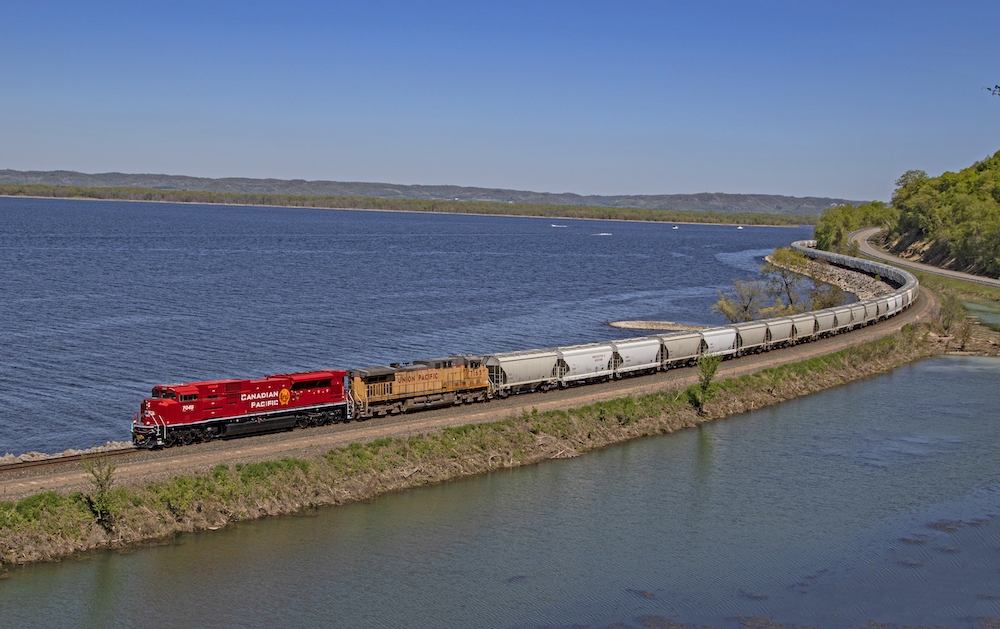
Railfanning the upper Mississippi River is a rewarding experience. The area’s scenic beauty rated a slogan from the Burlington Route: “Where nature smiles 300 miles,” enticing passengers to Chicago, Burlington & Quincy passenger trains along the east bank of the river. Milwaukee Road’s Hiawathas (slogan: “Nothing Faster on Rails”) competed for Chicago-Twin Cities business using its own route on the river’s west shores.
Today, the scenery endures, Hiawathas’ successors still roll (including a new train inaugurated in 2024!) and freight — run by successors BNSF and CPKC — makes for busy routes on both sides of the river. Scenery combined with good road access makes the river valley a great barrel to shoot trains.
There are train-friendly roads on both the CPKC and BNSF sides of the river, but you aren’t locked in to only one side — there are eight road bridges across the Mississippi in the 175 miles between Hastings, Minn. and Prairie du Chien, Wis., so you can bounce back and forth. The roads here have already been designated as “great” — part of the Great River Road, a multi-state initiative to highlight the best roads paralleling the Mississippi River. Look for the Great River Road signs with the distinctive boat pilot-wheel design along the trip, or research the routes online at ExperienceMississippiRiver.com.
St. Paul southbound
Begin at St. Croix, Minn., where paired BNSF and CPKC main lines out of St. Paul separate to opposite sides of the river. BNSF’s St. Croix Subdivision stays on the eastern bank and soon crosses into Wisconsin, while CPKC’s aptly-named River Subdivision crosses the Mississippi into Hastings and hugs the western bank. BNSF’s average of about 35 trains per day makes it the busier route, while CP runs approximately 15 trains/day on its line, plus four Amtrak trains.
U.S. route 61 takes you into Hastings, where you’ll find an ex-Milwaukee Road brick depot still in use by CPKC (but not by Amtrak) just a block south of CPKC’s lift bridge. The bridge is very accessible (1st Street actually goes under the bridge approach) and you may find a local unit tied up at the depot to service Ardent Milling on a former branch line in Hastings’ south end. BNSF has a lift span of its own on the Wisconsin side where the St. Croix River flows into the Mississippi. The BNSF bridge is comparatively modern (1984) and is easily viewable from the adjacent state route 10.
In the first 25 miles south to Red Wing, Minn. (Hager City on the Wisconsin side), there is only partial road access to both railroads. Wisconsin highway 35 starts away from the BNSF but runs parallel into Hager City, while CPKC is right next to stretches of county routes 54 and 18, but not for the entire distance.
Red Wing, Minn. is worth a stop regardless of which side of the river you are on (US 63 bridges the Mississippi here). Amtrak stops four times per day at the interesting Milwaukee Road depot (check out the railroad ephemera in the waiting room), while the nearby two-story former Chicago Great Western depot is trackless but home to Caribou Coffee. Keep your eyes peeled for an ex-Illinois Central SW14 working the nearby ADM plant. And yes, Red Wing Shoes does have a store in the company’s hometown.
It’s just over 30 miles south through some of the best scenery of the trip to Wabasha, Minn., site of the next bridge across the river. Through this stretch, the Mississippi includes Lake Pepin, a broad naturally-formed lake that is a recreation hub (and the birthplace of water-skiing). While roads parallel both railroads on this stretch, the CPKC side has clearer views from parallel US 61, although both road and rail are inland from the river for a few miles south of Red Wing. If you are looking for a pause, the Reads Landing Brewing Company just north of Wabasha advertises its unobstructed patio views of both CPKC and the river. Reads Landing was also the site of a Milwaukee Road pontoon bridge across the river, but abandoned in 1951. Fans of history may want to visit the Anderson House Hotel in Wabasha, Minnesota’s oldest (1856) operating hotel.
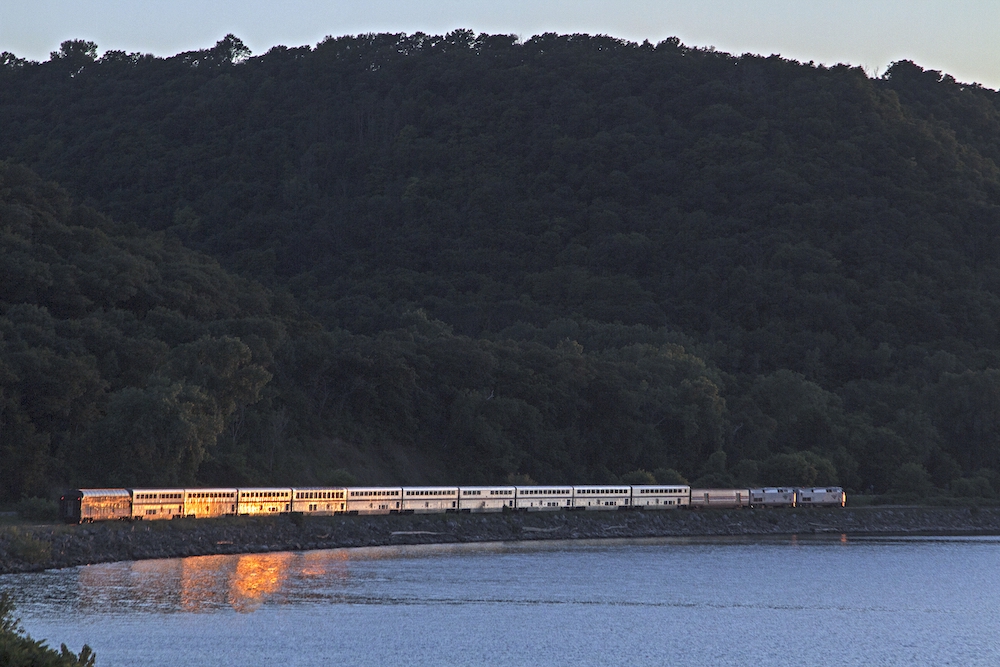
The road to Winona
For some reason, there seem to be more trees between Wisconsin 35 and BNSF on the other side of the river, and the road is often higher up on the bluff than the railroad. There are several scenic overlooks in the Maiden Rock area, including good views of Lake Pepin. Just south of Wabasha on the Wisconsin side, BNSF serves the Dairyland Power Co-op’s Madgett coal-fired power plant, which receives trains from the Powder River Basin. The plant is visible from highway 35. For the rest of the way to Winona, Minn., road and rail play tag with one another, and BNSF’s right of way is often immediately next to the route 35 shoulder.
Back to the other side of the river, CPKC’s Waseca Subdivision from Tracy, Minn., joins the River sub at Minnesota City. The Waseca Sub is a former C&NW line that came to the CPKC family via CP’s 2008 purchase of the Dakota, Minnesota & Eastern.
Just south of the junction in Minnesota City, exit off US 61 to explore Winona, Minn. To railroad historians, Winona is best known as the namesake for the Winona Bridge Railway Company, the proprietor of an otherwise unremarkable railroad bridge across the Mississippi that served as the shell company for a failed Burlington Northern end-run around labor agreements in the 1980s. Alco-powered short line Green Bay & Western used the Winona Bridge until it was closed in 1985 — GB&W successor Canadian National terminates in nearby East Winona, Wis.
The Chicago & North Western had its own railroad bridge at Winona, and disconnected spans still stand adjacent to the road bridge. C&NW successor Union Pacific maintains an “island” presence in Winona, serving a cluster of riverside customers via trackage rights over CPKC from Tunnel City, Wis. A C&NW predecessor’s 1883 freight house survives at Center Street next to the UP tracks. Winona’s 1888 Milwaukee Road depot is used by CPKC and Amtrak, and a decaying wooden freight house is next door — you can see the outline of where the Milwaukee’s distinctive logo was mounted on the building’s end.
Because the North Western had claimed the best route alongside the river from East Winona to Trempealeau, the Burlington was forced to build its line on a 5-mile causeway in the river. Trempealeau is a good site for wide open views of trains with the river and Lock and Dam No. 6 in the background. Heading south, wetlands force state route 35 inland, away from BNSF’s route.
On the west side, US 61 parallels CPKC very closely from just south of Winona to River Junction, almost to La Crosse, Wis. The four-lane highway makes it easy to keep up with trains, or turn around and catch up if needed. Interstate 90 shares the road with US 61 for 5 miles and crosses the river just north of La Crosse, providing a quick way to the east side of the river. If you are looking for a small-town break, pause in Dakota, Minn., where I-90 heads west away from the river. Dakota has built a pleasant shaded train-watching platform along River Street that provides unobstructed views of CPKC and river traffic.
CPKC picks up steam
At River Junction West, the CPKC main line changes from the River Sub to the Tomah Subdivision, and just a few miles south in La Crescent, Minn. the Marquette Sub continues CPKC’s route down the Mississippi. This previously underutilized route is gaining new importance from the CP-KCS merger, providing the direct route from Canada to Kansas City and onward toward Texas and Mexico. La Crescent is across the river from La Crosse, and trackage through the town is arranged as a pair of nested wyes, allowing CPKC traffic to go north, south or east. CPKC also has a six-track yard at La Crescent, so look for trains picking up or setting out. For close-up views of CPKC’s Mississippi crossing, follow Main Street eastward to Shore Acres Road.
Cheeseland hot spot
La Crosse is Wisconsin’s hottest rail spot because the CPKC and BNSF Chicago-Twin Cities main lines cross here at appropriately named Grand Crossing (which also once saw lines of C&NW and GB&W). CPKC maintains a small yard just west of the diamonds, while BNSF’s more substantial North La Crosse yards are to the north. BNSF trains change crews in La Crosse and the line designation changes from the St. Croix Sub to the Aurora Sub. La Crosse’s Amtrak station on CPKC dates from 1927 and is worth a visit. While the two-story station was restored in 2001, further improvements are coming as part of the agreement to add Amtrak’s Chicago-Twin Cities Borealis to the Empire Builder on the CPKC route. Nearby, CB&Q 4-6-4 4000 (once streamlined and named Aeolus), a caboose and the interlocking tower from Grand Crossing are displayed in Copeland Park. Further downtown, you can find the world’s largest six-pack — beer storage tanks painted to celebrate hometown brew Old Style — and if your timing is good, you may find BNSF switching the plant.
South of La Crosse, the rail action advantage tilts further towards BNSF. BNSF’s Aurora Sub is a double-track CTC-controlled speedway designed to handle high train volumes with velocity.
Wisconsin route 35 again matches up with BNSF on the south side of La Crosse, and stays with it for 60 miles to Prairie du Chien, Wis. (and beyond). This section has both some of the best scenery of the route and is easily accessible, although trying to keep up with BNSF trains at speed is likely a fool’s errand. Some interesting spots worth checking out are the scenic overlook next to the tracks north of Stoddard; Lock and Dam No. 8 near Genoa and No. 9 near Lynxville; the route 82 overpass south of DeSoto (this will also get you across the river to Lansing, Iowa on the CPKC); and the Leitner Creek overlook, also near Lynxville.
Slow, sleepy, and unsignaled
By contrast, CPKC’s Marquette Sub is a caterpillar — a slow and sleepy non-signaled route — poised to become a butterfly as part of CPKC’s merger makeover. Train volumes are projected to jump from about five to 11 trains per day based on merger-related and organic traffic gains. CPKC is investing in three 10,000 ft.+ sidings and 72 miles of CTC south of Marquette, Iowa to handle the growth, along with other upgrading and renewal of the track structure.
Minnesota state route 26 runs along the CPKC south from La Crescent, first alongside the river and then further inland away from the main channel. Twenty-four miles along, Minnesota 26 turns into Iowa 26 at New Albin, Iowa. If your timing is good, the scenic overlook at Lansing can yield broad panoramas that include CPKC running through town hard by the river. Lansing also has the only bridge across the Mississippi in the 60 miles between La Crosse and Prairie du Chien, Wis. South of Lansing, CPKC stays by the river, but the closest road heads inland — following the Great River Road signs will reunite you with the rail at Harpers Ferry (population 262 — about the same size as the town with the same name in West Virginia). Keep following the Great River Road signs to Iowa 76, which will put you shoulder-to-shoulder with CPKC for the last 3 miles into Marquette.
Marquette is the junction with CPKC’s Mason City Subdivision, a grain- and ethanol-rich line running west across the northern tier of Iowa. The former Milwaukee Road line was part of the first rail route between Chicago and the Twin Cities in 1867 and used to cross the Mississippi between Marquette and Prairie du Chien on a pontoon bridge like the one further north in Reads Landing. The pontoon bridge was abandoned in 1961, but CPKC still keeps a small yard in Marquette along the Mason City Sub, just west of the wye.
Prairie du Chien interlude
Prairie du Chien is across the river from Marquette, easily accessible by the US 18 bridge across the river.
BNSF is the dominant railroad in Prairie du Chien, but regional railroad Wisconsin & Southern (WSOR) keeps the Milwaukee Road legacy alive as part of their Southern Division. WSOR crosses the BNSF on a diamond at Crawford on the south side of town and you can look for them on St. Feriole Island, west of downtown. The island has an interesting mix of active rail customers, a former depot and historic railroad hotel, and even some stored rail equipment at the north end of the island (please respect private property and look from a distance).
The final scenic highlight is the Point Lookout at Wisconsin’s Wyalusing State Park, south of Prairie du Chien. The lookout provides sweeping views of the river valley and BNSF tracks on a causeway crossing the mouth of the Wisconsin River. The views are worth the circuitous drive, and you probably won’t have to wait long for a train.
Worth stopping for:
• Red Wing Depot: Catch one of the four daily Amtrak stops at this elegant old depot, with an adjacent riverside park, historic downtown and rail-served industry.
• Winona: Winona’s riverside industrial area isn’t pretty in the conventional sense, but it’s a throwback to a time when railroads made their living switching medium-sized customers in city industrial districts. Modelers are guaranteed to come away with layout ideas.
• La Crosse’s Grand Crossing: Access to Wisconsin’s hottest rail spot is tough. Unfortunately, the Gillette Street overpass doesn’t have a sidewalk, but the end of nearby Gillette Place provides a bit of a view.
If time is short:
See some of the best scenery and roadside rail action by looping out of La Crosse downriver on Wisconsin 35 along BNSF, crossing the river at Lansing, Iowa and then back north on Iowa/Wisconsin route 26 (next to CPKC) to La Crescent. The total loop is only 75 miles and takes less than 2 hours.
Besides the railroad:
• Scenic views: The area draws a lot of visitors because of the miles of scenic views along the Mississippi. Just relax and enjoy the drive, or visit one of the many parks and wildlife refuges along the way. Summer and fall are the times to visit.
• Small towns: Winona hosts the summertime Great River Shakespeare Festival and La Crosse celebrates its brewing culture with Oktoberfest, but that’s just scratching the surface. Look for signs or flyers advertising local events and you may just stumble into unexpected fun.
• Get on the river: Several towns (including La Crosse, Prairie du Chien and Winona) host partial- and full-day cruises along scenic stretches of the Mississippi. Also, you can rent canoes or kayaks to paddle in the river’s backwaters.






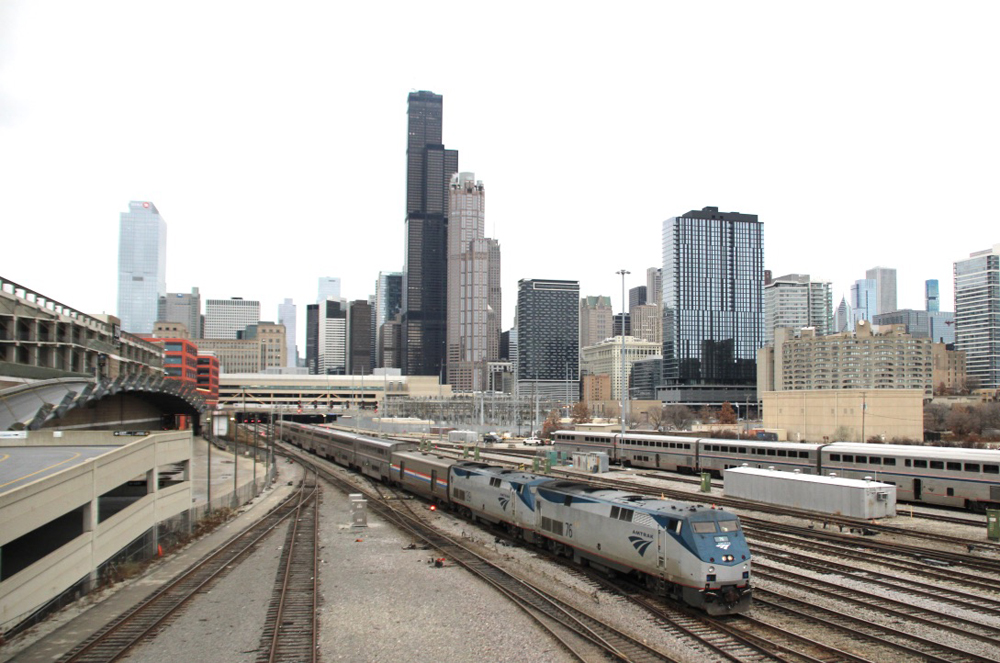
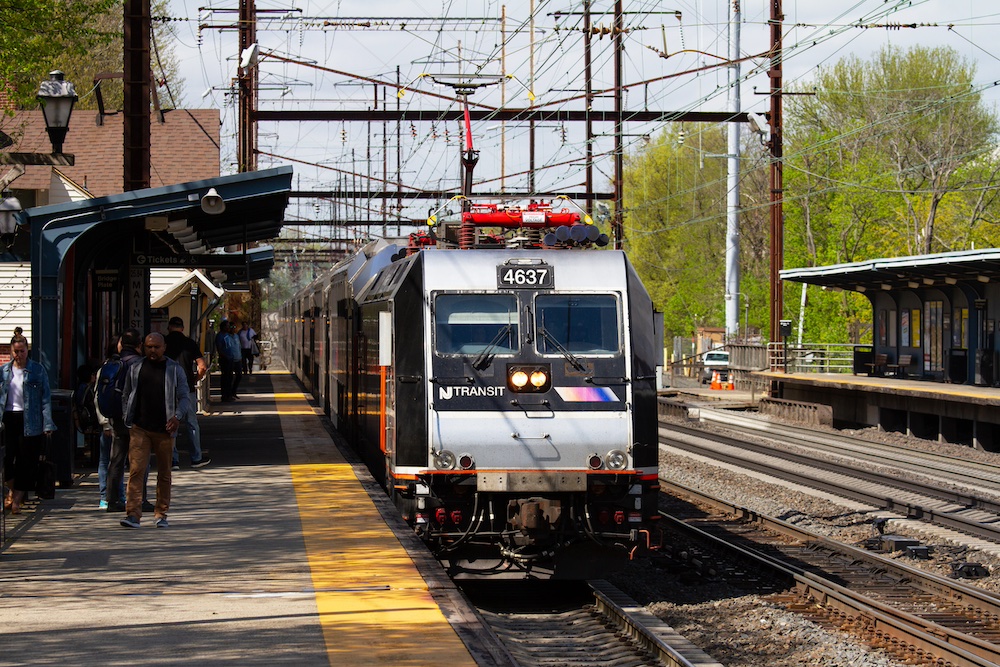
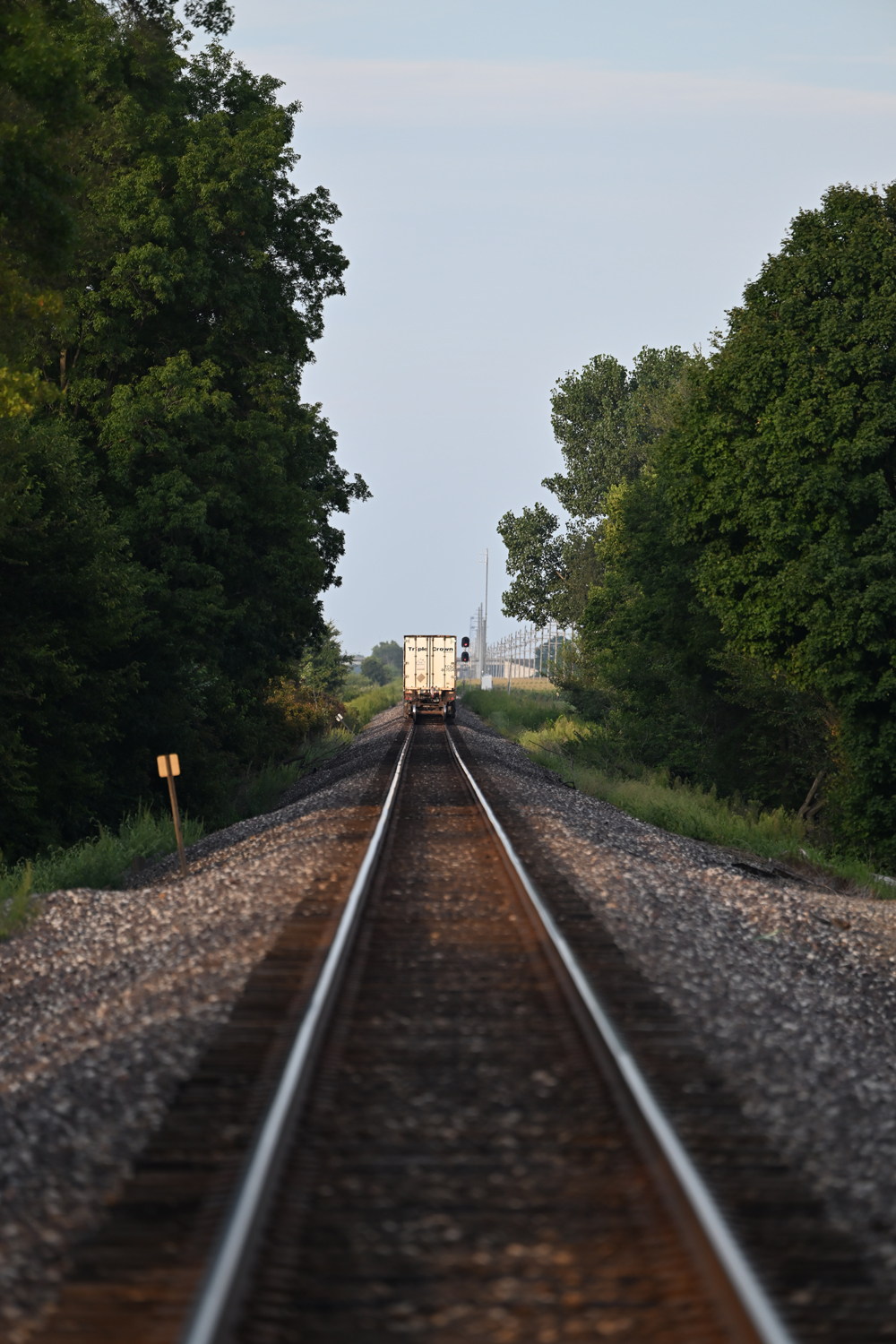
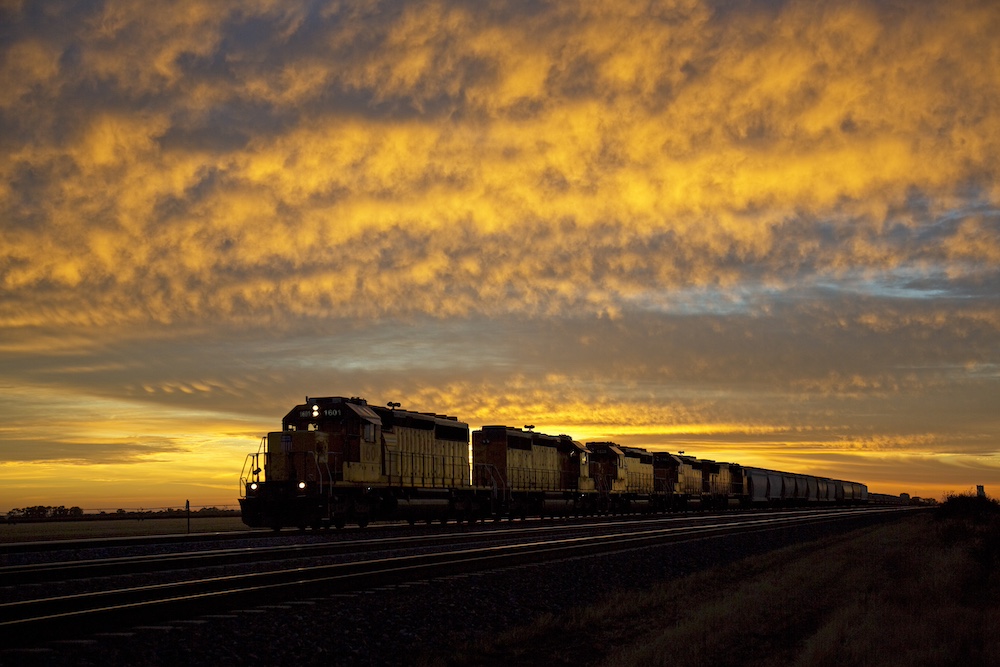




One fall afternoon my sister and I were driving up Highway 61 on the west side. With the little islands in the river, appropriately the Dolly Parton/Kenny Rogers song “Islands in the Stream” came on the radio. Always makes me think of that day. We did cross on the old Wabasha bridge, since replaced, into Wisconsin. It was scary. Duck hunting was fantastic on Armistice Day 1940, so much that many didn’t realize the birds were getting out ahead of a major blizzard. Many hunters died on the Upper Mississippi and elsewhere that day.
Yes yes yes. Been there and done that. Watched trains from high overlooks both at Wyalusing State Park and at LaCrosse.